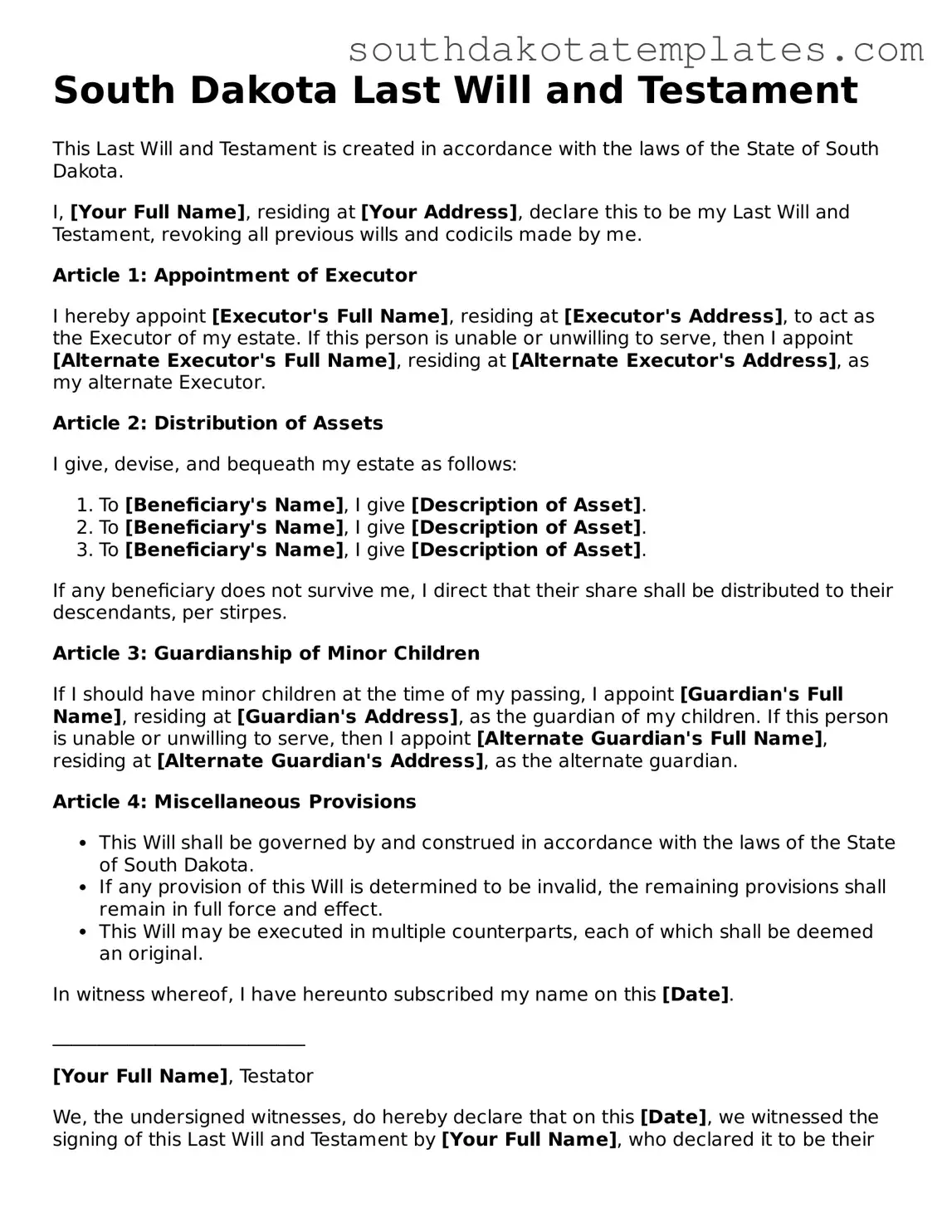Free South Dakota Last Will and Testament Document
A Last Will and Testament is a legal document that outlines how an individual's assets and affairs will be managed after their death. In South Dakota, this form provides a structured way for individuals to express their final wishes regarding the distribution of their property and the care of any dependents. It is important to complete this form accurately to ensure that your intentions are honored.
To fill out the South Dakota Last Will and Testament form, click the button below.
Get Last Will and Testament
